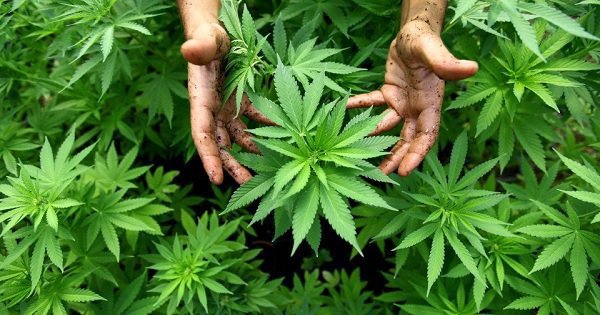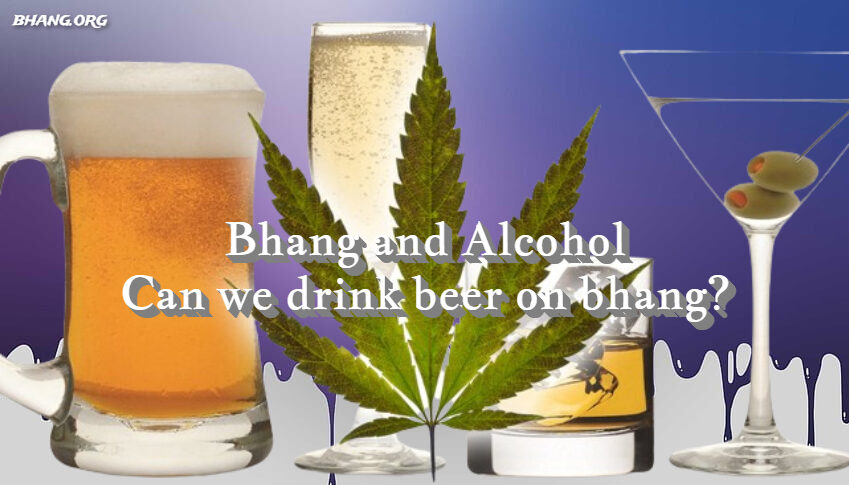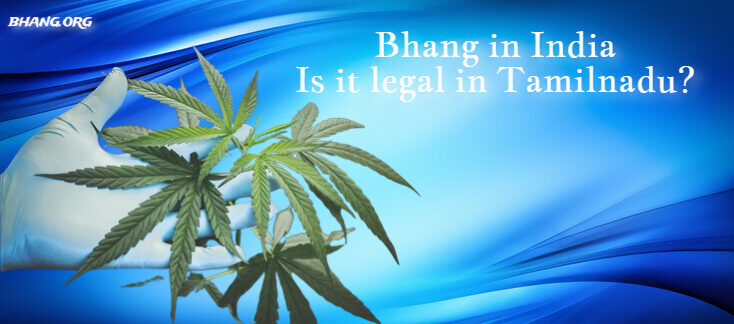
WHAT IS BHANG?
Understanding Bhang: Origins, Uses, and Effects
Bhang, a concoction crafted from leaves of the cannabis plant, has its roots in the culinary traditions of the Indian subcontinent. This age-old preparation finds its place in Indian culture through beverages like bhang lassi and bhang thandai, which are infused with cannabis and commonly sold in dedicated bhang shops. Remarkably, the practice of incorporating bhang into food and drinks dates back to as early as 1000 BC, and it continues to be a cherished tradition during spring festivals such as Holi and Maha Shivaratri.
Derived from the buds, leaves, and flowers of the female cannabis plant, bhang is utilized as an edible mixture. It is endorsed as a remedy for various ailments, including nausea, vomiting, and physical discomfort, within the realm of Ayurvedic medicine.
One of the well-known bhang beverages is bhang goli, made by blending freshly ground bhang leaves with water. Additionally, bhang is often mixed with clarified butter (ghee), sugar, or jaggery before being incorporated into desserts.
Bhang cultivation is widespread in states like Bihar, Tamil Nadu, Rajasthan, and the Sub-Himalayan regions of India. Beyond India, bhang is also cultivated in countries like Pakistan, China, Iran, Iraq, and certain parts of Europe.
Mechanism of Action:
The psychoactive effects experienced after consuming bhang are attributed to cannabinoids, the primary chemical compounds found in the Cannabis sativa plant. Among the various cannabinoids present in bhang, THC (tetrahydrocannabinol) and CBD (cannabidiol) are the most extensively studied.
THC is responsible for inducing the characteristic “high” associated with cannabis consumption, while CBD, a non-psychoactive cannabinoid, is believed to contribute to the potential health benefits of bhang.
Endocannabinoids, naturally produced by the body, share molecular similarities with CBD and THC. These endocannabinoids interact with cannabinoid receptors in the body, influencing functions such as immunity, learning, memory, decision-making, and motor control.
Benefits of Bhang Consumption:
Consumption of bhang can offer various benefits:
- Alleviation of dysentery, fever, digestion issues, and sunstroke.
- Improvement in appetite, aiding in weight gain or maintenance.
- Reduction of anxiety and stress, potentially due to its effects on the central nervous system.
- Treatment of depression and chemical imbalances in the brain.
- Enhancement of sleep quality, particularly in cases of insomnia and conditions like chronic pain, multiple sclerosis, and sleep apnea.
- Relief from pain, including pain associated with cancer treatments.
- Treatment of inflammatory disorders such as rheumatoid arthritis and fibromyalgia.
- Reduction of inflammation and discomfort, enhancement of digestive system health, improvement of skin conditions, and enhancement of mood are among the potential health benefits.
Effects of Bhang
Red Eyes
Consumption of cannabis-based substances like bhang can lead to increased heart rate and blood pressure due to the presence of cannabinoids. This increase in blood pressure and heart rate is akin to the physiological response seen during physical activity. As blood pressure decreases over time, blood vessels, including those in the eyes, dilate, resulting in increased blood flow and causing the eyes to appear red.
Persistent Cough
Excessive use of bhang can result in symptoms similar to those caused by tobacco smoke, including persistent coughing and increased production of phlegm. Prolonged ingestion may lead to serious lung conditions.
Dry Mouth
The neurologically altering properties of bhang can reduce saliva production, leading to dry mouth, a condition known as xerostomia. Extended exposure may result in oral sores and bad breath. Additionally, high doses of bhang can impair judgment, coordination, and short-term memory, and may induce paranoia or psychosis. It is advised that children and teenagers refrain from using bhang and other cannabis products unless prescribed for medical purposes.
Irritability
Withdrawal from bhang can occasionally cause restlessness, although this state typically lasts only a few hours and poses no significant concern. Some individuals liken this feeling to the experience of discontinuing caffeine consumption.
Cognitive Decline (Impaired Memory and Concentration)
Bhang can impair memory, learning, processing speed, and concentration, with these effects sometimes persisting for several weeks. Additional negative effects of excessive bhang consumption comprise insomnia, anxiety, paranoia, impulsive actions, diminished control, psychosis, and impaired coordination of body movements.
Tachycardia and Hypotension
Individuals with cardiovascular conditions face increased health risks from consuming bhang, as it can elevate cardiac workload, catecholamine levels, carboxyhemoglobin, and cause postural hypotension. Brain regions associated with pleasure, memory, thought, concentration, sensory and temporal perception, and coordinated movement have high concentrations of cannabinoid receptors. Marijuana overactivates the endocannabinoid system, resulting in the “high” and other effects such as altered mood and perception, decreased cooperation, impaired thinking and problem-solving abilities, interrupted learning, decreased appetite, and challenges with memory recall.
Who Should Avoid Bhang?
Individuals with cardiovascular conditions should refrain from consuming bhang due to the heightened health risks it poses. Bhang has the potential to elevate cardiac workload, catecholamine levels, carboxyhemoglobin, and induce postural hypotension.
It is strongly advised that individuals with heart problems or high blood pressure avoid ingesting marijuana.
Discussion
While bhang is primarily known for its euphoric effects, some individuals may also experience feelings of panic, fear, or depression after its consumption. Prolonged or heavy use of bhang, particularly when initiated at a young age, has been associated with increased rates of school dropout and diminished life satisfaction. Additionally, the use of cannabis products may elevate the risk of developing certain illnesses such as schizophrenia and depression, particularly among older adults.
Can Marijuana Be Addictive?
Similar to how water hydrates our bodies, the consumption of marijuana and its derivatives can have addictive effects. As discussed earlier, the presence of the THC compound in bhang or cannabis-based products contributes to its addictive potential, despite the medicinal properties of other chemicals present. However, addiction to any substance is influenced by multiple factors, including environmental factors, genetics, and the individual’s mental health.
Signs of Bhang Overdose:
Identifying an overdose of bhang can be challenging, often requiring self-awareness from the individual or observation from those around them. The amount of marijuana needed to cause addiction varies from person to person, but certain symptoms may become noticeable.
- Increased Tolerance or Withdrawal Symptoms: Individuals may find that they need to consume more marijuana to achieve the desired effects. Withdrawal symptoms such as mood swings, irritability, insomnia, loss of appetite, cravings, cold sweats or chills, and depression may arise when the drug is not present in their system.
- Physical Indications: These may include red eyes, sluggish reflexes, or a strong odor of marijuana.
- Difficulty in Reducing or Stopping Use: Dependency on marijuana for basic functions like sleep and appetite can make it challenging for individuals to reduce or cease their use of the drug.
- Excessive Time Spent Getting High: Users may increasingly devote more time to consuming marijuana as their tolerance builds.
- Social Withdrawal: Individuals may withdraw from family and friends or engage less frequently in activities they once enjoyed.
- Continued Use Despite Negative Consequences: Marijuana abuse can strain relationships and become the focal point of an individual’s life.
- Use as a Coping Mechanism: Some individuals may turn to marijuana to escape from stressors rather than addressing them directly.
- Dependency for Relaxation or Enjoyment: Individuals may feel unable to relax or derive pleasure from activities without using marijuana.
- Inability to Sleep or Eat Without Using: Regular use of marijuana may lead to dependency on the drug for sleep and appetite regulation.
- Diverse Range of Marijuana Products: Individuals may purchase various marijuana products to facilitate consumption, such as THC-containing foods, vaping products, or traditional smoking methods.
- Financial Strain: Sustaining a marijuana habit can be costly, leading individuals to borrow money frequently or engage in theft to support their addiction.
- Legal Issues: Operating vehicles under the influence of marijuana or encountering legal consequences in areas where its recreational use is prohibited may be indicative of addiction.
- Avoidance of Jobs Requiring Drug Testing: Individuals may avoid employment opportunities that require drug testing, even if it means missing out on promising opportunities.
These indicators might suggest an unhealthy connection with marijuana and may necessitate intervention or assistance to tackle potential addiction concerns.
Can Addiction Be Treated?
Treating addiction requires a comprehensive approach that addresses both the physical and psychological aspects of the condition. we recognize the importance of providing compassionate and personalized care to individuals seeking recovery. Our facility offers unique amenities aimed at supporting the journey to wellness.
- Nutritious Meals: Patients receive carefully curated organic meals designed to meet their nutritional needs. Our menu is rich in proteins, vitamins, and essential nutrients to support overall health and recovery.
- High-Quality Cuisine: We prioritize the quality of food provided to our patients, ensuring that every meal contributes to their well-being and healing process.
- 24/7 Security: The safety and security of our patients are paramount. Our facility is equipped with round-the-clock security and surveillance measures to ensure a secure environment. Access to the premises is restricted, requiring permission for entry to maintain patient confidentiality and safety.
Our Treatment Approach
At our facility, we utilize a comprehensive BioPsychoSocial model to address cannabis addiction, taking into account biological, psychological, and social factors and their interconnectedness.
Therapeutic Interventions:
Art Therapy: Art therapy is employed to assist individuals in coping with withdrawal symptoms and expressing their emotions in a healthy manner. By engaging in creative activities, patients can redirect their focus from triggering emotions associated with addiction.
- Talk Therapy: Through talk therapy, patients have the opportunity to explore the underlying feelings and experiences that contributed to their cannabis addiction. Counselors provide support and guidance to help patients replace addictive behaviors with healthier alternatives.
- Yoga and Meditation: Yoga and meditation techniques are incorporated to help individuals manage stress associated with cannabis addiction withdrawal. These practices promote relaxation and mental clarity, easing the transition to a substance-free lifestyle.
- Recreational Activities: Engaging in recreational activities such as biking and trekking offers patients a positive outlet for their energy and helps alleviate feelings of anxiety and depression often experienced by those struggling with substance abuse.
- Pet Therapy: Interaction with animals, known as pet therapy, has proven to be beneficial for individuals recovering from cannabis addiction. Interacting with friendly animals can uplift mood and reduce stress, providing a source of comfort and emotional support.
Our treatment approach combines various therapeutic modalities to address the complex needs of individuals grappling with cannabis addiction, fostering holistic healing and long-term recovery.
Conclusion:
Understanding the origins, uses, and effects of bhang is essential for making informed decisions about its consumption. While bhang holds cultural significance and potential medicinal benefits, it is crucial to be aware of the risks associated with its use, including addiction and adverse health effects. Seeking professional help and adopting a holistic approach to treatment are vital steps towards recovery for individuals struggling with cannabis addiction.
FAQs
What is bhang, and how is it traditionally consumed?
Bhang is a preparation made from the leaves of the cannabis plant and has been a part of Indian culinary traditions for centuries. It is commonly consumed in beverages like bhang lassi and bhang thandai, especially during festivals such as Holi and Maha Shivaratri.
What are the effects of consuming bhang?
Consumption of bhang can lead to various effects, including red eyes, dry mouth, increased heart rate, and altered cognitive function. Long-term or excessive use may also result in addiction and negative psychological consequences.
Is cannabis addiction a serious issue?
Yes, cannabis addiction can have significant implications for an individual’s health, relationships, and overall well-being. Prolonged or heavy use of cannabis can lead to dependence, withdrawal symptoms, and may exacerbate underlying mental health conditions.
How can cannabis addiction be treated?
Cannabis addiction is typically treated through a combination of therapeutic interventions, including talk therapy, art therapy, yoga and meditation, recreational activities, and pet therapy. These approaches aim to address the physical, psychological, and social aspects of addiction.
Who should avoid consuming bhang or cannabis products?
Individuals with cardiovascular conditions, high blood pressure, or a history of substance abuse should avoid consuming bhang or cannabis products. Additionally, pregnant or breastfeeding women and individuals with a predisposition to mental health disorders should exercise caution.


